Representatives of the Tetraodontiformes order of the Acanthopterygii superorder are mainly inhabitants of seas, except for a few species inhabiting river mouths and streams with fresh water. The order comprises about 350 fishes of 10 families.
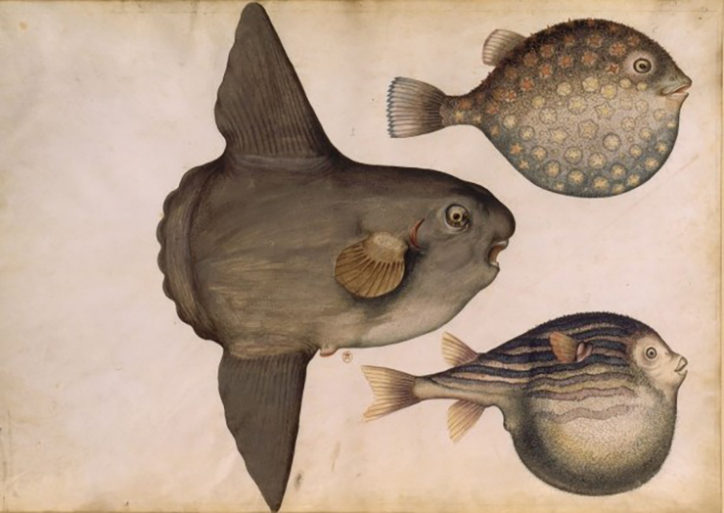
(Picture from Claude Aubrier’s (1665–1742) “Shells and Fish” album. littlepennydreadful.tumblr.com)
Tetraodontiformes have bizarre body shapes, and representatives of the Tetraodontidae and Diodontidae families have the ability to swallow water or air and balloon in case of danger. Considering the fact that the fish bodies are covered with small spikes, they become almost invulnerable to predators.
Rudarius excelsus is the smallest fish of the order. It can be only up to two centimeters long. Sunfish (Mola mola) is the largest one. It is the heaviest bony fish that exists nowadays. It can be over three meters long and weigh more than two tons.
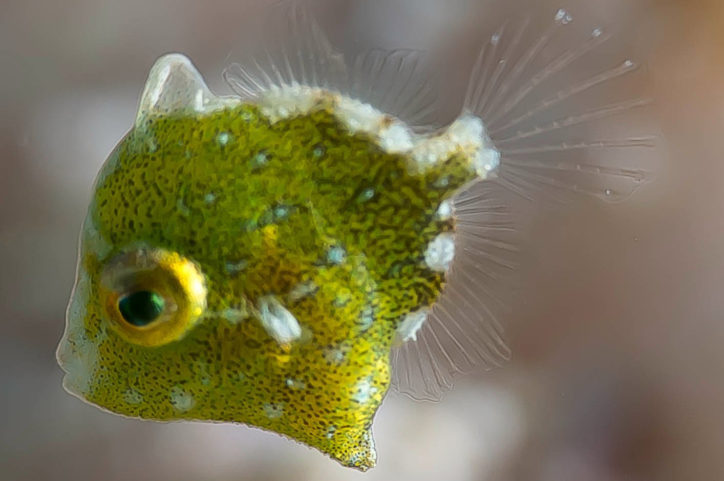
(Rudarius excelsus. Photo © orangkucing.tumblr.com)
Most fishes of the order can’t bend their bodies laterally; therefore, they move rather slowly with the help of fins.
The following seven representatives of the order inhabit the Adriatic Sea.
The Balistidae family comprises about 40 fish species of 12 genera. Pseudobalistes naufragium is the largest of them. It can be a meter long, but the size of most species doesn’t exceed 20-50 centimeters.
Triggerfishes have an oval-shaped body compressed laterally, a large head with small eyes and a small mouth with strong jaws and teeth adapted for crushing shells of mollusks, shells of crabs, sea urchins and other echinoderms. Fish protect their eggs, and if something disturbs them during this process, they can become aggressive and cause injury to the ones that bother them.
One of the amazing characteristic features of triggerfishes is the structure of their first dorsal fin. It consists of three spines and it often can’t be seen if it’s folded. When the fish senses danger, it spreads the fin, the second spine supports the longest first one so that it seems impossible to fold them without breaking them. The triggerfish returns the fin to a “peaceful” position by “unlocking” the “lock” it got. The fish uses this construction, while hiding in the crevices of the rocks. And there is no chance the predators can get triggerfishes out of their shelter. The fish got its English name – triggerfish – for its dorsal fin.
Balistidae are mostly inhabitants of coral reefs of the seas of the Atlantic, Indian and Pacific Oceans; only one representative of the family inhabits the Adriatic:
Grey triggerfish (Balistes capriscus).

(Grey triggerfish. Photo © camping-le-moteno.co.uk)
It inhabits the depths of up to 100 meters, usually up to 50 meters. It prefers to swim close to the rocky bottom, often enters the bays, lagoons and harbors. It is a loner fish. Sometimes, it makes small schools. The maximum recorded length is 60 cm; specimens up to 45 cm long are more common. The maximum weight is 6.2 kilograms. It feeds on bottom mollusks, squids and fish. It is a permanent inhabitant of the Adriatic Sea.
Monacanthidae is a fish family, numbering slightly more than 100 species, united in 27 genera. Aluterus scriptus is the largest representative of the family. It can be 110 centimeters long, but most fishes of the family don’t exceed 40-60 centimeters.
Similar to fishes of the Balistidae family, they have a small mouth with large teeth and a similar structure of the first dorsal fin. They feed on crustaceans, crabs, worms, small fishes, algae and coral polyps.
One representative of the family inhabits the Adriatic:
Reticulated leatherjacket (Stephanolepis diaspros).
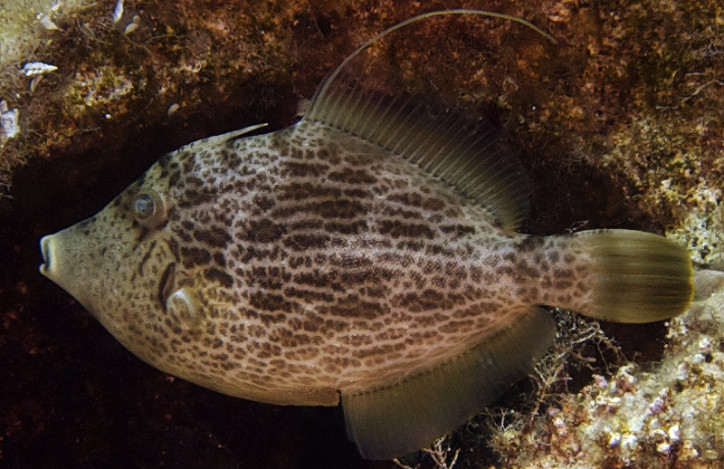
(Reticulated leatherjacket. Photo © tokaiki.net)
It inhabits the depth of 20-50 meters. It prefers to swim close to the coastal rocky bottom covered with vegetation. The maximum recorded length is 25 cm. It feeds on small invertebrates. It is a rare species in the Adriatic, which entered the Mediterranean Sea through the Suez Canal.
Sunfishes (Molidae) are the largest bony ray-finned fishes. They can weigh more than two tons. They have a pelagic life style. They are found at the depth of up to 400 meters. They have a very large body compressed laterally. They feed mainly on jellyfishes and goldlines, as well as small fishes and crustaceans.
Two of the five existing fishes of the family inhabit the Adriatic Sea:
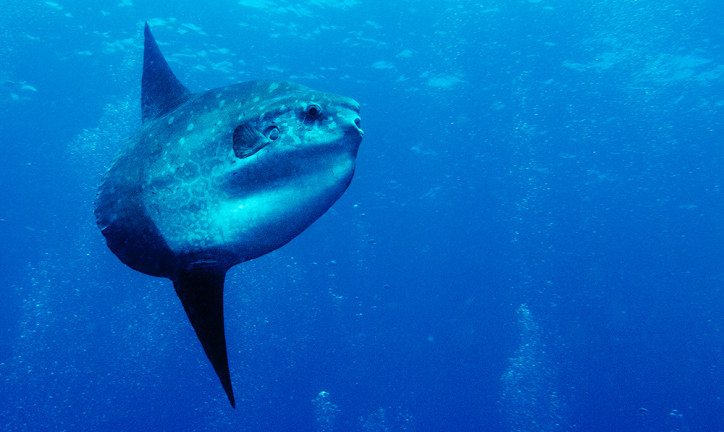
It inhabits the depth of 30-480 meters, usually 30-70 meters. It often drifts on the surface, lying on its side. It is a pelagic species. The maximum recorded length is 333 cm. The maximum weight is 2,300 kilograms. It was added to the Guinness Book of World Records as the heaviest bony fish. It feeds on fish, mollusks, zooplankton, jellyfishes and crustaceans. It is a permanent rare inhabitant of the Adriatic Sea.
Slender sunfish (Ranzania laevis).
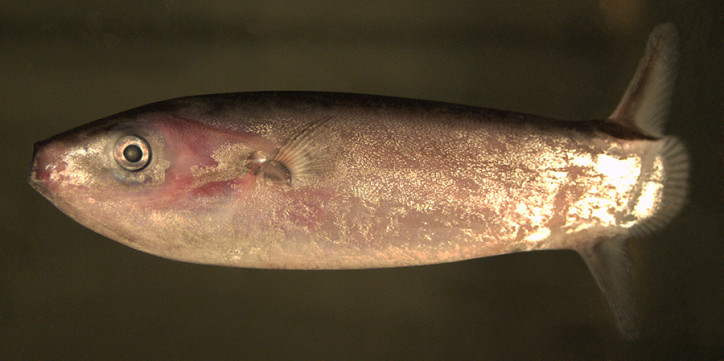
(Slender sunfish. Photo © IUCNweb. flickr.com/photos/iucnweb)
It is a pelagic species. It inhabits the depth of 1-140 meters. The maximum recorded length is 100 cm. It feeds on planktonic crustaceans. It is a rare permanent inhabitant of the Adriatic Sea.
Tetraodontidae is a family that comprises about 200 fish species of 29 genera. They have the ability to swallow water or air balloon in case of danger. Considering the fact that the body of the fish is covered with small spines, which are invisible in the “peaceful” state, they become almost invulnerable to predators. And if the latter ones decide to attack and swallow the fish that has taken a spherical shape, it most often gets stuck in the throat, which causes the death of the one who dared to attack representatives of the family.
Most of them are toxic, some of them are among the most poisonous vertebrates in the world. Some representatives of the family have the liver, sometimes the skin, which contains tetrodotoxin. Eating them causes poisoning. Despite this, in some countries, including Japan, Korea and China, fish dishes are considered to be a delicacy prepared by cooks who were specially training and who know what parts of the fish and how much should be used.
Three representatives of the Tetraodontidae family inhabit the Adriatic Sea:
Oceanic puffer (Lagocephalus lagocephalus).

(Oceanic puffer. Photo by © Oddgeir Alvheim. fishbase.org)
It inhabits the depth of 10-476 meters, usually 10-100 meters. It is a pelagic species, which occasionally enters the estuaries. The maximum recorded length is 61 cm. The maximum weight is 3.2 kilograms. It feeds on crustaceans and squids. It has been found in the Adriatic Sea several times. The fish flesh contains tetrodotoxin, which is a strong non-protein poison of neuroparalytic action that is best known due to the Japanese “fugu” dish, which is usually cooked from a relative of Lagocephalus lagocephalus, that is, Takifugu rubripes, and is found in the flesh of the latter as well.
Silver–cheeked toadfish (Lagocephalus sceleratus).
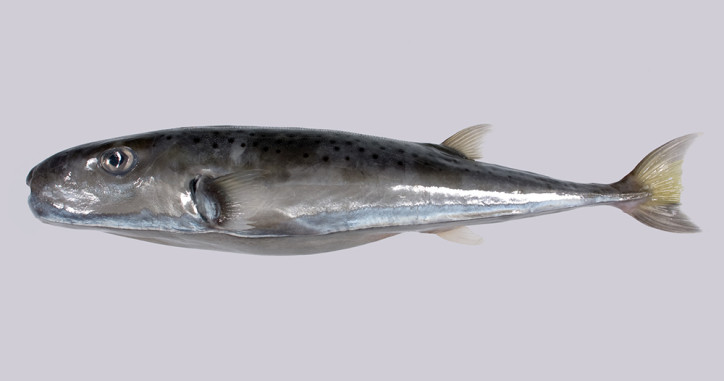
(Silver-cheeked toadfish. Photo © fishesofaustralia.net.au)
It inhabits the depth of 18-100 meters. It prefers to swim close to the sandy bottom near the rocks. The maximum recorded length is 110 cm, specimens about 40 cm long are more often found. The maximum weight is 7 kilograms. It feeds on crustaceans and squids. It entered the Mediterranean Sea through the Suez Canal. It has been found in the Adriatic Sea several times. The fish flesh contains tetrodotoxin as well.
Blunthead puffer (Sphoeroides pachygaster).
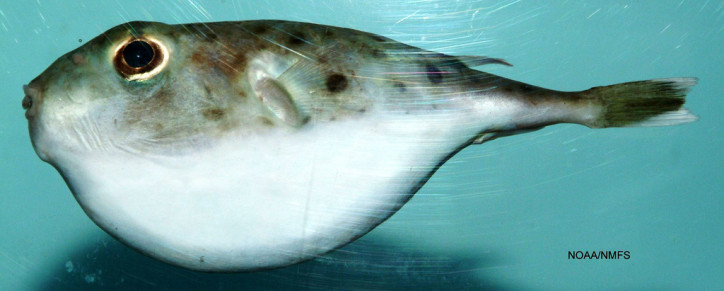
(Blunthead puffer. Photo © NOAA Photo Library. flickr.com/photos/noaaphotolib)
It inhabits the depth of 50-480 meters, usually 50-250 meters. It is a pelagic species. It prefers to swim close to the rocky, sandy and oozy bottom. The maximum recorded length is 40.5 cm; specimens up to 26 cm are more common. It feeds mainly on squids. It entered the Mediterranean Sea through the Suez Canal. It is found in the southern part of the Adriatic Sea.
The Trachichthyiformes order of the Acanthopterygii superorder consists mainly of medium-sized deep-sea fishes inhabiting all oceans and comprises 5 families and about 70 species.
Trachichthyidae are small fishes that can be 6 to 75 centimeters long. Some species are of commercial importance. They feed mainly on zooplankton, including shrimps, amphipods and other crustaceans, as well as small fishes. These species grow slowly and live long. The maximum age of Hoplostethus atlanticus is 149 years.
Only one representative of the order of Trachichthyidae family is found in the Adriatic Sea:
Mediterranean slimehead (Hoplostethus mediterraneus).

(Mediterranean slimehead. Photo by © João Delgado. fishbase.org)
It inhabits the depth of 100-1,175 meters. It prefers to swim close to the oozy bottom. During the day, it usually swims in the deep sea. At night, it can swim up to the surface. The maximum recorded length is 42 cm; specimens up to 20 cm long are more often found. It feeds on crustaceans, mollusks and small fish. It is the inhabitant of the southern part of the Adriatic Sea.